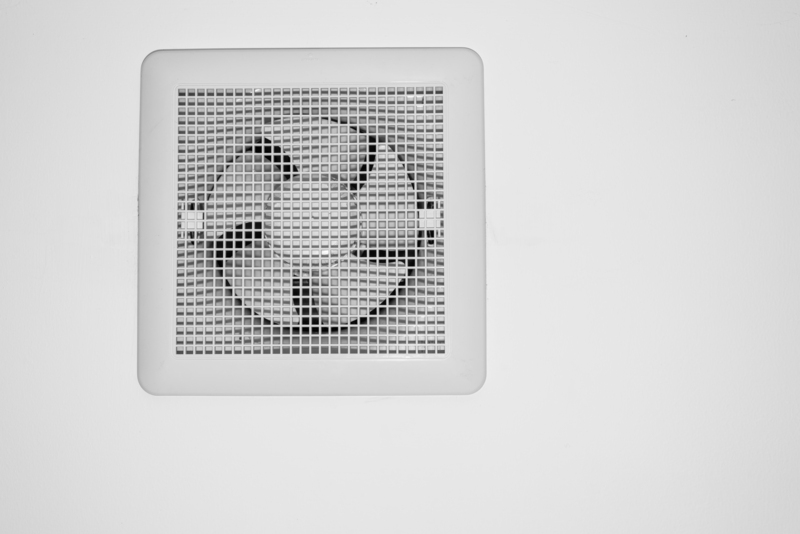A Comprehensive Guide to Clean Mould from Window Sills
Posted on 20/09/2025
A Comprehensive Guide to Clean Mould from Window Sills
Mould is not just an eyesore; it can also impact your health and the integrity of your home. Window sills are one of the most common places where mould grows, especially in damp or humid environments. Whether you've spotted a bit of discolouration or noticed a musty smell, it's crucial to take immediate steps to clean mould from window sills. In this extensive guide, you'll learn everything from identifying mould to safely removing it--and even preventing it from returning.
Table of Contents
- Understanding Mould on Window Sills
- Why Clean Mould from Window Sills Immediately?
- How to Identify Mould on Window Frames
- Essential Tools and Materials for Cleaning Mould
- Step-by-Step Guide: How to Clean Mould from Window Sills
- Natural vs. Chemical Cleaners: What Works Best?
- Tips to Prevent Mould on Window Sills
- Health Risks Associated with Mould Exposure
- Frequently Asked Questions about Mould Removal
- Conclusion
Understanding Mould on Window Sills
Mould, a type of fungus, thrives in areas with excess moisture. Window sills often attract mould spores due to condensation from temperature differences, leaky windows, or poor ventilation. Over time, this can lead to visible black mould or other types of mildew that can extend beyond surface-level grime.
Why Are Window Sills Prone to Mould?
- Condensation: Moisture collects on window panes, dripping down onto the sill.
- Leaky Window Frames: Improper sealing allows water to seep in.
- Poor Air Circulation: Lack of airflow encourages damp conditions.
- Warm Temperatures: Creates an optimal environment for fungal growth.
_Recognizing the root causes of mould on your window sills is vital in both removal and prevention._
Why Clean Mould from Window Sills Immediately?
Allowing mould on window sills to accumulate can lead to a host of problems. Besides staining and damaging the window frames, prolonged exposure can cause significant health risks, especially for those with allergies or respiratory issues. Prompt cleaning is crucial for maintaining a healthy, attractive living space.
- Minimises health risks (respiratory issues, allergic reactions).
- Prevents further spread to curtains, walls, or other indoor areas.
- Protects window structure from rot, decay, and permanent staining.
_Mould removal from window frames isn't just cosmetic; it's essential for your home and wellbeing._
How to Identify Mould on Window Frames
Detecting mould formations on window sills early makes cleaning simpler and helps minimize damage. Look for these common signs:
- Discoloration: Patches of black, green, brown, or white fuzz or streaks.
- Musty Smell: A persistent, earthy odour near the windows.
- Dampness: Noticeable moisture accumulation on or around the sill.
- Peeling Paint: Paint bubbling or coming off due to excess moisture.
_If you spot these signs, it's likely time to clean window sill mould before the problem worsens._
Essential Tools and Materials for Cleaning Mould
Before jumping into mould removal from your window frames, gather the necessary supplies. Proper equipment will make the process more efficient and safer.
- Protective gear: Gloves, mask, and goggles to avoid exposure.
- Scrubbing brush or old toothbrush for stubborn spots.
- Soft cloths or paper towels for wiping.
- Spray bottle for applying cleaning solutions.
- Mould cleaner: Commercial mould remover, vinegar, or hydrogen peroxide.
- Baking soda for extra scrubbing power.
- Bucket of warm water for rinsing.
_Having these materials on hand ensures you'll be able to efficiently clean window sill mould and keep the area healthy._
Step-by-Step Guide: How to Clean Mould from Window Sills
Now, let's walk through the safest and most effective approach to remove mould from window sills. Always remember to protect yourself when cleaning.
Preparation
- Open windows: Increase ventilation and reduce the risk of inhaling spores.
- Wear protective gear: Your health comes first--use gloves, mask, and goggles.
- Remove curtains/blinds: To improve accessibility and check for contamination.
Cleaning Process
- Dry-wipe loose spores: Using a damp cloth or paper towel, gently wipe surface mould to avoid spreading spores.
- Apply cleaning solution: Spray your chosen cleaner (either commercial mould remover, white vinegar, or hydrogen peroxide) onto the affected areas. Let it soak for 10-15 minutes to penetrate the mould.
- Scrub thoroughly: Using a stiff-bristled brush or toothbrush, scrub the mould from the window sill, focusing on corners and crevices.
- Rinse and wipe: Remove residual cleaner and mould debris with a fresh, damp cloth.
- Dry the area: Use a towel to ensure the window sill is completely dry, discouraging new growth.
_Repeat these steps if any mould remains. For stubborn stains, sprinkle baking soda on the affected area, scrub again, and rinse._
- Dispose of cleaning materials: Properly dispose of or launder any cloths, brushes, or gloves used in the process.
- Disinfect: After physical removal, consider spraying the window sill with a disinfectant to eliminate lingering spores.
Extra tip: If you're dealing with delicate or painted window sills, test your cleaning solution on a small, hidden area first.
Cleaning Wooden Window Sills and Frames
- Avoid soaking: Excess water can damage wood or make future mould worse.
- Use minimal moisture: Always wring out cloths and use the least water possible.
- Treat with vinegar or rubbing alcohol: These are safer options for wood compared to harsh chemicals.
Natural vs. Chemical Cleaners: What Works Best?
When looking to clean mould from window sills, you have two primary choices--natural or chemical cleaners. Both have their advantages and limitations.
Natural Alternatives
- White vinegar: Effectively kills many species of mould and is safe for most surfaces.
- Baking soda: Gentle abrasive; deodorizes and scrubs away mould.
- Hydrogen peroxide: Antibacterial and antifungal, but may bleach some paints.
- Tea tree oil: Potent natural mould remover, though more costly.
Natural solutions are ideal for those sensitive to chemicals or aiming for eco-friendly cleaning.
Chemical Cleaners
- Commercial mould removers: Ready-made and often highly effective at killing mould spores quickly.
- Bleach: Kills surface mould, but may not penetrate porous materials and can discolour window sills.
Note: If using chemical cleaners, ensure the area is well-ventilated and follow manufacturer instructions closely.
_For serious infestations, or if you're dealing with persistent or toxic mould, consider consulting a professional mould remediation service._
Tips to Prevent Mould on Window Sills
Once you've succeeded in removing mould from your window sills, prevention is the next step. Creating an environment that resists mould will save you effort and protect your home.
Best Practices
- Improve ventilation: Open windows regularly, use extractor fans, and avoid blocking vents.
- Control humidity: Keep indoor humidity below 60%--use a dehumidifier if necessary.
- Insulate windows: Proper insulation prevents condensation and moisture build-up.
- Fix leaks: Immediately repair any window or roof leaks.
- Wipe down windows: Regularly remove condensation with a towel or squeegee.
- Clean routinely: Dust and clean window areas regularly to stop mould before it develops.
_Effective prevention measures make future mould cleaning from window frames quicker and less frequent._
Health Risks Associated with Mould Exposure
Cleaning mould from window sills is especially critical due to its potential health effects. Mould can cause:
- Respiratory irritation (coughing, wheezing, asthma attacks)
- Allergic reactions (sneezing, rashes, itchy eyes)
- Headaches and fatigue
- Long-term health issues for vulnerable groups (elderly, children, people with respiratory illnesses)
_Understanding these risks emphasizes the importance of regularly removing mould from your living spaces._
Frequently Asked Questions about Mould Removal
1. How often should I clean my window sills to prevent mould?
Weekly dusting and monthly deep cleaning are generally sufficient for prevention. Wipe away condensation daily in high-humidity months.
2. Is bleach the best solution to remove mould from window frames?
Bleach is effective for non-porous surfaces, but vinegar or hydrogen peroxide often works better on porous materials or wooden frames, with less risk of damage.
3. What if the mould keeps coming back?
Persistent mould returns indicate an underlying moisture problem. Address leaks, improve airflow, or seek professional help if necessary.
4. Can I use the same process on uPVC, wooden, and metal window sills?
While most methods are safe, always spot-test cleaners on painted or delicate surfaces, especially with wood or aluminium.
5. When should I call a professional?
If the mould covers more than 1 square metre, has penetrated deeply, or you experience health reactions, it's best to consult a remediation specialist.
Conclusion
Dealing with mould on window sills is a common household challenge, but with the right methods, it's entirely manageable. Regularly clean mould from window sills, address underlying moisture issues, and adopt prevention strategies to ensure a healthy, beautiful home environment.
Remember: Acting quickly not only restores the appearance of your windows but also safeguards your health and prevents costly long-term damage. Utilize this guide whenever you need to remove window sill mould, and encourage your household to stay vigilant for recurring issues.
_If you found this comprehensive guide to clean mould from window sills helpful, share it with others and check our site for more expert cleaning advice._






